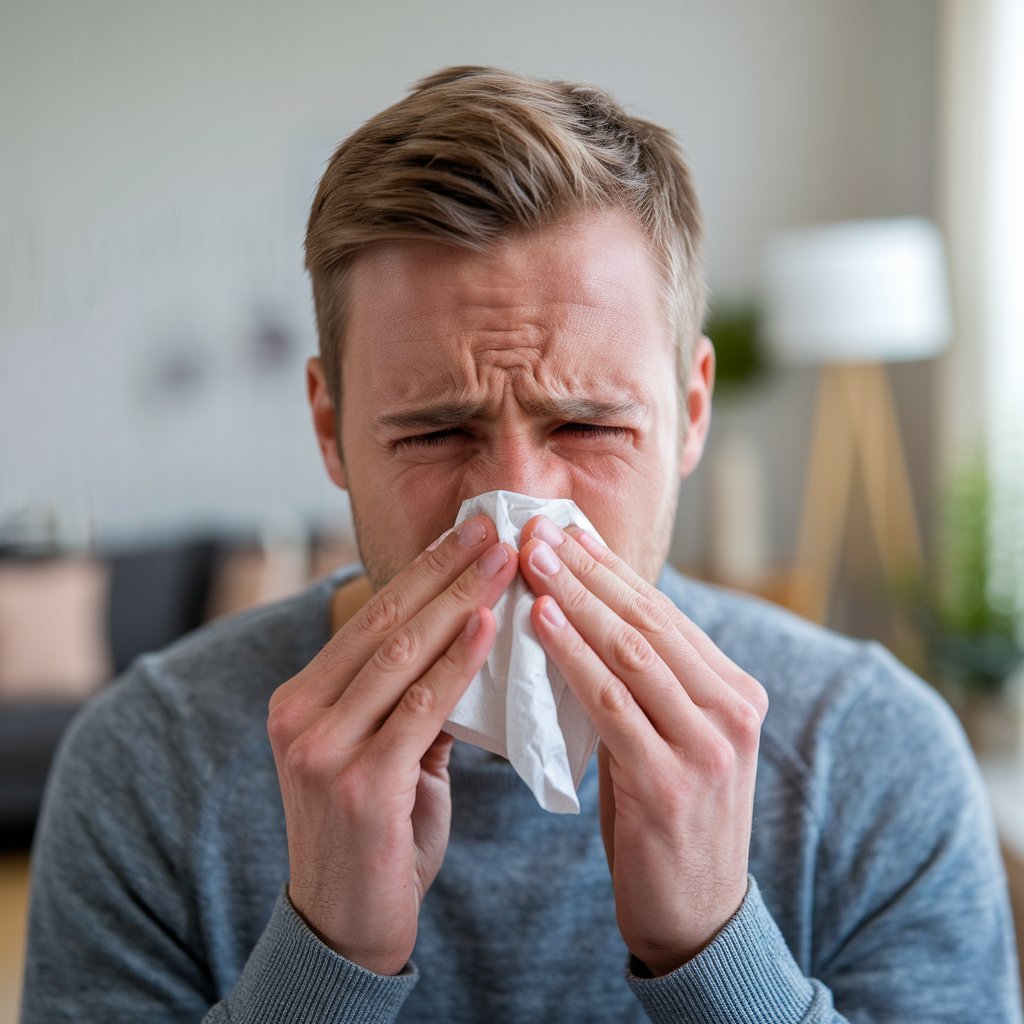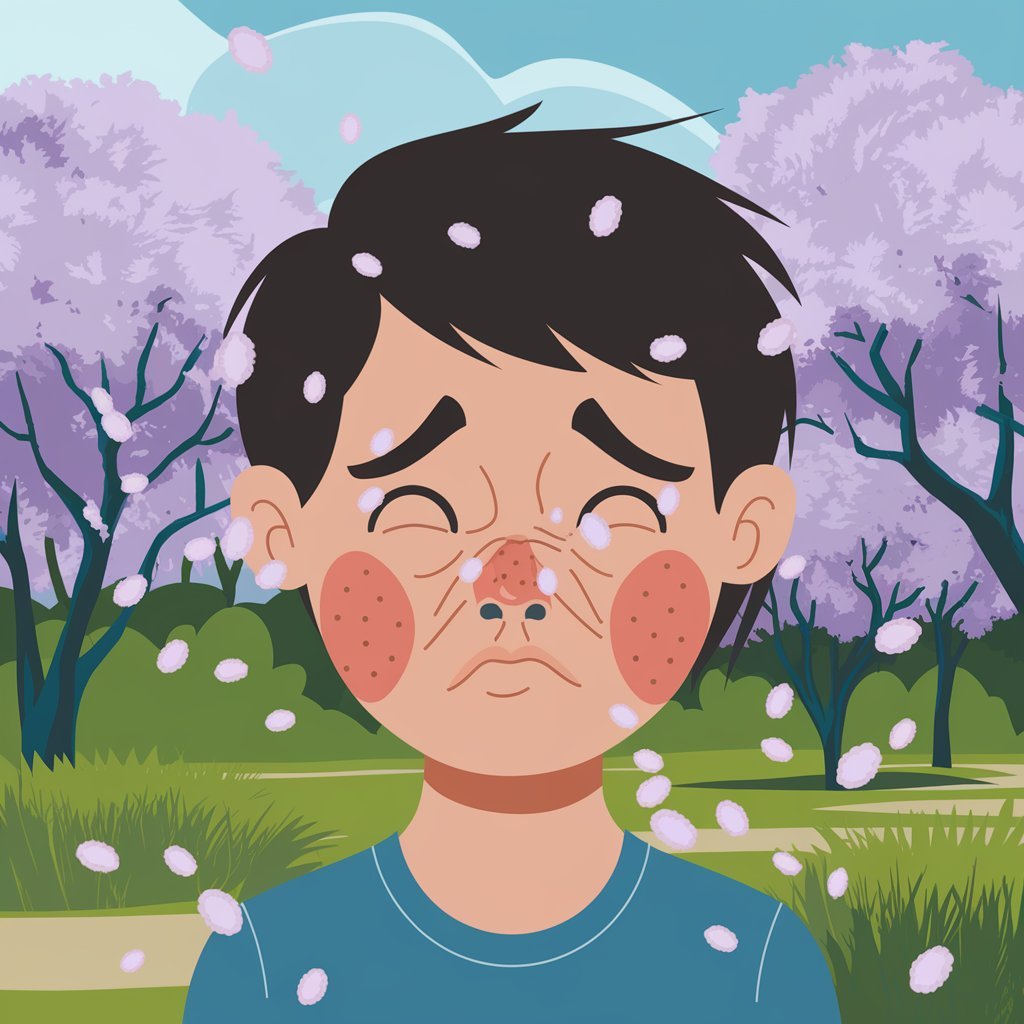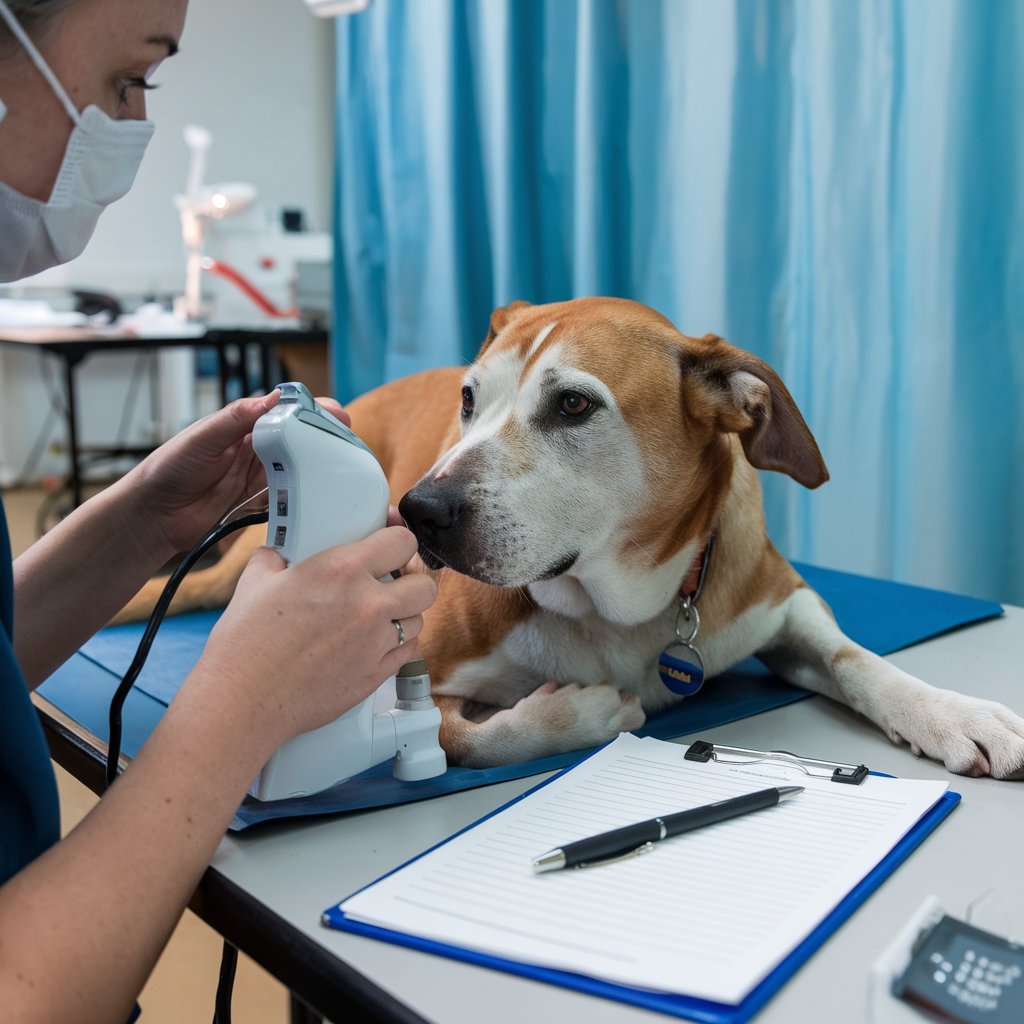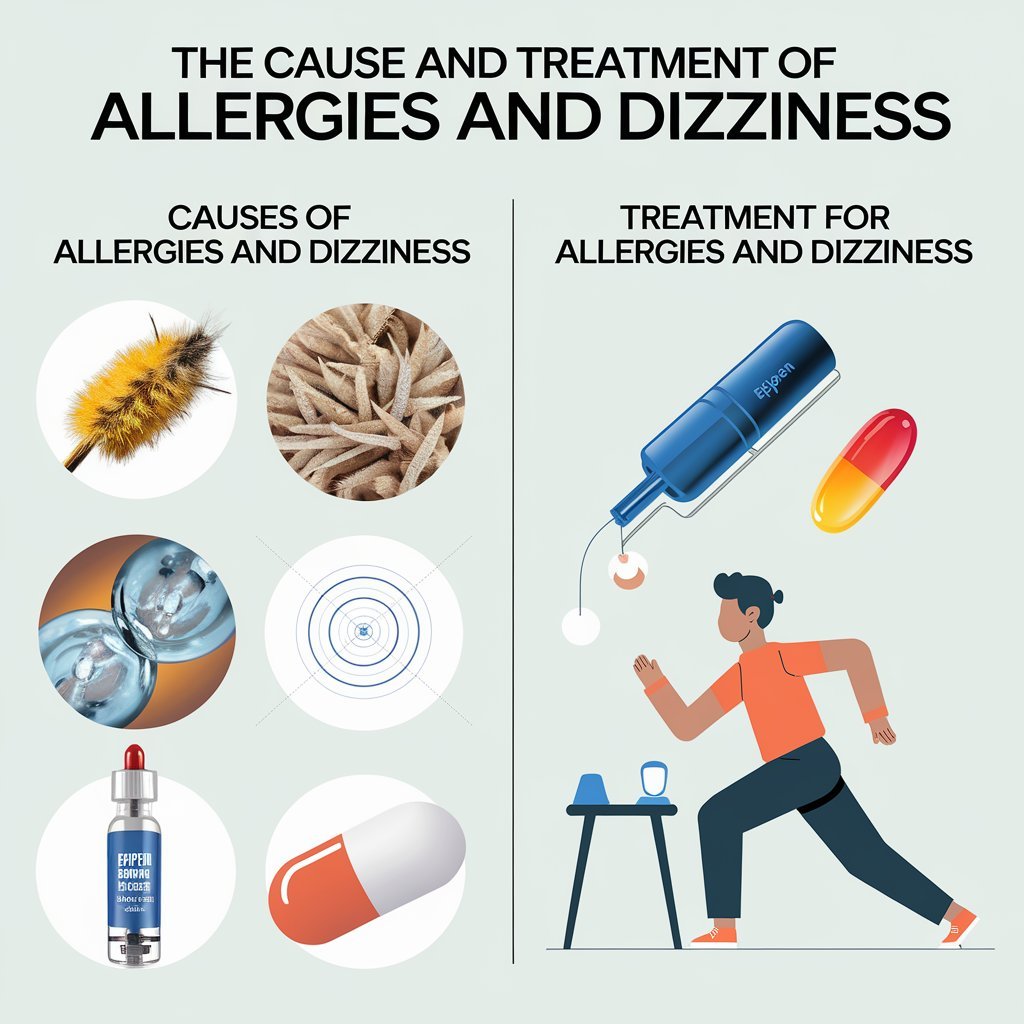Allergic rhinitis is the inflammation of nasal passageways that happens when your immune system overreacts to allergens like pollen, pet dander, or dust mites that are floating in the air. When it’s pollen causing the nasal inflammation, allergic rhinitis is referred to as hay fever or seasonal allergies.
In those with allergic rhinitis, allergens may provoke a range of distressing symptoms, such as sneezing; watery or congested nose; red or watery eyes; and irritation in the mouth, nose, and around the eyes.
Allergic rhinitis affects over 400 million people worldwide, and treatments-ranging from over-the-counter and prescription medications to allergen immunotherapy-can help minimize the effects of these symptoms on your life.
Classification of Allergic Rhinitis

There are two types of allergic rhinitis: seasonal and perennial. This depends on the frequency at which you exhibit the symptoms as well as their duration.
Seasonal allergic rhinitis
Also known as hay fever—though it is not specific to hay and does not cause a fever—seasonal allergic rhinitis occurs at specific times of the year when pollen counts are high. People with allergies to pollen from grasses, weeds, and trees can experience seasonal allergic rhinitis, usually in the spring and fall. In addition to hay fever, seasonal allergic rhinitis may be referred to as seasonal allergies.
Perennial Allergic Rhinitis
The word “perennial” means year-round. As such, perennial allergic rhinitis refers to allergy-related nasal inflammation that can last year-round. People allergic to dust mites, pet dander, cockroach debris, and mold spores can have perennial allergic rhinitis.
Allergic Rhinitis Symptoms
Symptoms of allergic rhinitis develop shortly after exposure to a substance to which you are allergic and may include the following:
- Runny nose with clear-colored mucus
- Sneezing
- Red, watery eyes
- Itchy eyes, nose, or mouth
Unless treated, prolonged allergic rhinitis can result in additional symptoms including:
- Nasal congestion (stuffiness)
- Postnasal drip (mucus drainage down the back of the throat)
- Cough
- Sore throat
- Headache
- Reduced sense of smell
- Clogged ears or ear-popping sensations
- Sinus pressure (pressure around the cheeks and nose)
- Fatigue
- Facial puffiness
- Dark circles under the eyes
- Difficulty sleeping
Causes
Allergic rhinitis is the development of an allergic reaction to a harmless substance that would normally cause no problem to a human, such as pollen or dust mites, that overstimulates the immune system.
When an allergen is inhaled by allergic individuals, the immune system misinterprets it as a danger and leads to the release of histamine and other chemicals. Histamine causes inflammation in the nasal lining and increases mucus production, leading to symptoms of allergic rhinitis.
- Grass, weed, and tree pollen
- Pet dander from furry pets, such as dogs and cats
- Dust mites
- Mold spores
- Cockroach debris
Risk Factors
Some of the risk factors that increase your chance of having allergic rhinitis include the following

- Family history: If you have a first-degree relative with allergies, the chances are high that you develop allergic rhinitis.
- Eczema: Allergic and allergic rhinitis mainly occur among people suffering from eczema. The latter is a chronic inflammatory disease mainly affecting the skin.
- Early life exposures: Exposure to air pollution, indoor allergens such as dust mites, secondhand smoke, and antibiotic use in early childhood can increase the risk of developing allergic rhinitis.
- Lifestyle habits: Smoking and poor quality of sleep increase the risk of developing allergic rhinitis.
Diagnosis
If you go to a doctor and show symptoms of allergic rhinitis, this doctor will first take time to read through your history and know more about your conditions. They might ask you the following information.
- What brings on your symptoms
- How often and how seriously do your symptoms occur
- How many members in your family have allergic diseases
- What your home and work places are like, such as whether you have a pet at home or your workplace involves exposure to chemicals.
Your doctor will likely conduct a physical examination and may suggest allergy testing to determine what is causing your allergic rhinitis symptoms.
The most common type of allergy test is a skin prick or scratch test. This is a technique in which small amounts of possible allergens are scratched or pricked into your skin, and an allergic reaction is noted if it occurs. If you are allergic to one of the tested allergens, you will most likely develop a raised itchy bump where your skin was scratched with that allergen.
Your doctor may also ask you to undergo an allergy blood test, like an ImmunoCAP test. Allergy blood tests measure the level of immunoglobulin E (IgE) in your blood. IgE are antibodies that your body produces against certain allergens. The higher the levels of IgE, the more likely you are to have an allergic disorder such as allergic rhinitis.
Treatments for Allergic Rhinitis
The treatment of allergic rhinitis is aimed at alleviating symptoms so that you can minimize discomfort and enhance your quality of life. Your healthcare provider will formulate a treatment plan depending on the type of allergic rhinitis you have, whether seasonal or perennial, and the severity of your symptoms.
Medications
There are several OTC and prescription medications that effectively reduce allergic rhinitis symptoms. These include:
- Nasal steroid sprays are the most potent drug for an allergic rhinitis patient. The sprays will help with inflammation and swelling of the nasal passage, resulting in less stuffiness. Also, it minimizes the runny nose, sneezing, and itchiness. Generally, when nasal steroid sprays are administered on a regular basis, benefits tend to accrue after several days or so; improvements in the symptoms can often be noticed after fourteen days.
- Antihistamines: Medications that reduce the action of histamine include sneezing, itchiness, watery eyes, and runny noses. They may be in drops for the eye, oral tablet, syrup, or nasal sprays. Some antihistamines are useful when taken at the onset, before exposure, and on an as-needed or short-term use; many discover that they grow less effective in time or become less effective over time as the pollen count within the air picks up.
- Decongestants: Over-the-counter in nasal spray and pill forms, these medicines remove nasal congestion immediately to allow people to breathe. Generally, decongestants produce quick relief with stuffiness eased for hours or even longer but should only be used three days at a time. The risks of using them too frequently increase the risk for rebound swelling where the swelling that occurs increases over time once decongestant use is halted.
- Leukotriene pathway inhibitors: Prescription drugs like Singular (montelukast) interfere with leukotrienes, which are chemicals the body puts out during an allergic reaction that help cause the symptoms of running nose and congestion.
Allergen Immunotherapy
Allergen immunotherapy is the long-term treatment of allergic rhinitis in cases where other treatments are ineffective. It is a process whereby the identified allergens are given in gradually increasing doses to enable your body to build up tolerance to the allergens and eventually reduce the severity and frequency of allergy symptoms.
Depending on your allergies, your healthcare provider may recommend immunotherapy in the form of allergy shots or sublingual (under the tongue) tablets.
Allergy shots are injections of the diluted allergen extracts. Your healthcare provider gives you the shots regularly to allow your body to build up its tolerance to the allergen. The injection schedule varies, based on your allergies and symptom severity. You should notice that symptoms improve within a few months after injections, and you will require fewer injections as time passes since your body improves its reaction to the allergens.
Effective with a grass or ragweed pollen, and even dust mite allergy, a sublingual tablet is great. This can reduce allergy symptoms from dissolving allergen extracts underneath your tongue in a tablet on a daily basis. You often start taking your sublingual tablets several months before allergy season starts. Sometimes, you need to take your sublingual tablets for three years.
Self-Care Measures
This might include nasal washes, which involves rinsing your nasal passages with saline or a saltwater solution from a neti pot or nasal spray bottle. Doing this can help clear mucus from your nose.You can purchase nasal saline in a store or make a saline solution following the instructions on a pre-mixed packet for nasal saline rinses. Be sure to use distilled or boiled-and-cooled water in order to avoid the risk of life-threatening infections that can occur using unboiled tap water.

You can, if possible, also try the best to keep away from a trigger. Keep a symptom journal for some time, until you find a specific allergen causing your problem. After identification of allergen, it includes avoiding such conditions by keeping your windows closed while pollen days appear, washing of hands after dealing with animals or using allergen-proof bedding to avoid the allergen.
How to Prevent Allergic Rhinitis
There is no known way to prevent allergic rhinitis entirely, but along with doing your best to avoid known allergens, there are ways to prevent symptoms. You can try to prevent allergic rhinitis symptoms by doing the following
- Monitor allergy index forecasts: Weather and plant growth stages can increase the release and spread of pollen in the air. Following your area’s allergy index forecast can help you keep track of high pollen count days so you can adjust your activities accordingly.
- Minimize allergen exposure: Steps to minimize exposure to allergens may include keeping windows closed during high pollen seasons such as the spring, summer, and early fall or keeping pets out of your bedroom.
- Wash hands regularly: Wash your hands with soap and water frequently, and avoid touching or rubbing your nose and eyes.
- Use eye protection: Outdoors, wear sunglasses and a wide-brimmed hat to protect your eyes from the pollen.
- Use air filters: Air purifiers with HEPA filters help remove allergens from your environment at home.
Related Conditions
Individuals with allergic rhinitis are more likely than others to develop certain other conditions. Many of these conditions have similar inflammatory processes and shared risk factors with allergic rhinitis. These conditions include:
- Asthma: About 38% of patients with allergic rhinitis also have asthma, which is characterized by difficulty in breathing due to allergens and other factors.
- Eczema: Most patients with eczema also have allergies and allergic rhinitis. Exposure to some allergens can cause eczema and allergic rhinitis symptoms.
- Obstructive sleep apnea (OSA): Allergic rhinitis symptoms, like nasal congestion, may interfere with sleep and contribute to the development of OSA. OSA is a sleep disorder that occurs when the airways are partially or completely blocked, obstructing the flow of oxygen while you sleep and leading to frequent awakenings and broken sleep.
- Allergic conjunctivitis: It is common to find allergic rhinitis associated with allergic conjunctivitis. Allergic conjunctivitis is that in which the allergens provoke the conjunctiva, a thin, clear membrane covering your eyeball, to become inflamed and swollen, leading to redness, itching, watering, and pain.
Living With Allergic Rhinitis
Allergic rhinitis can significantly affect your quality of life. Many sufferers with allergic rhinitis describe having symptoms that disrupt their sleeping or cause daytime fatigue and headaches that impact their emotional well-being and ability to function at work, at school, or in social environments.
The good news is that treatments and lifestyle changes can effectively control symptoms. If you have symptoms of allergic rhinitis or your treatments are no longer working, speak with a healthcare provider. They can discuss treatment options to effectively reduce symptoms so you can continue enjoying and participating in your daily activities.




